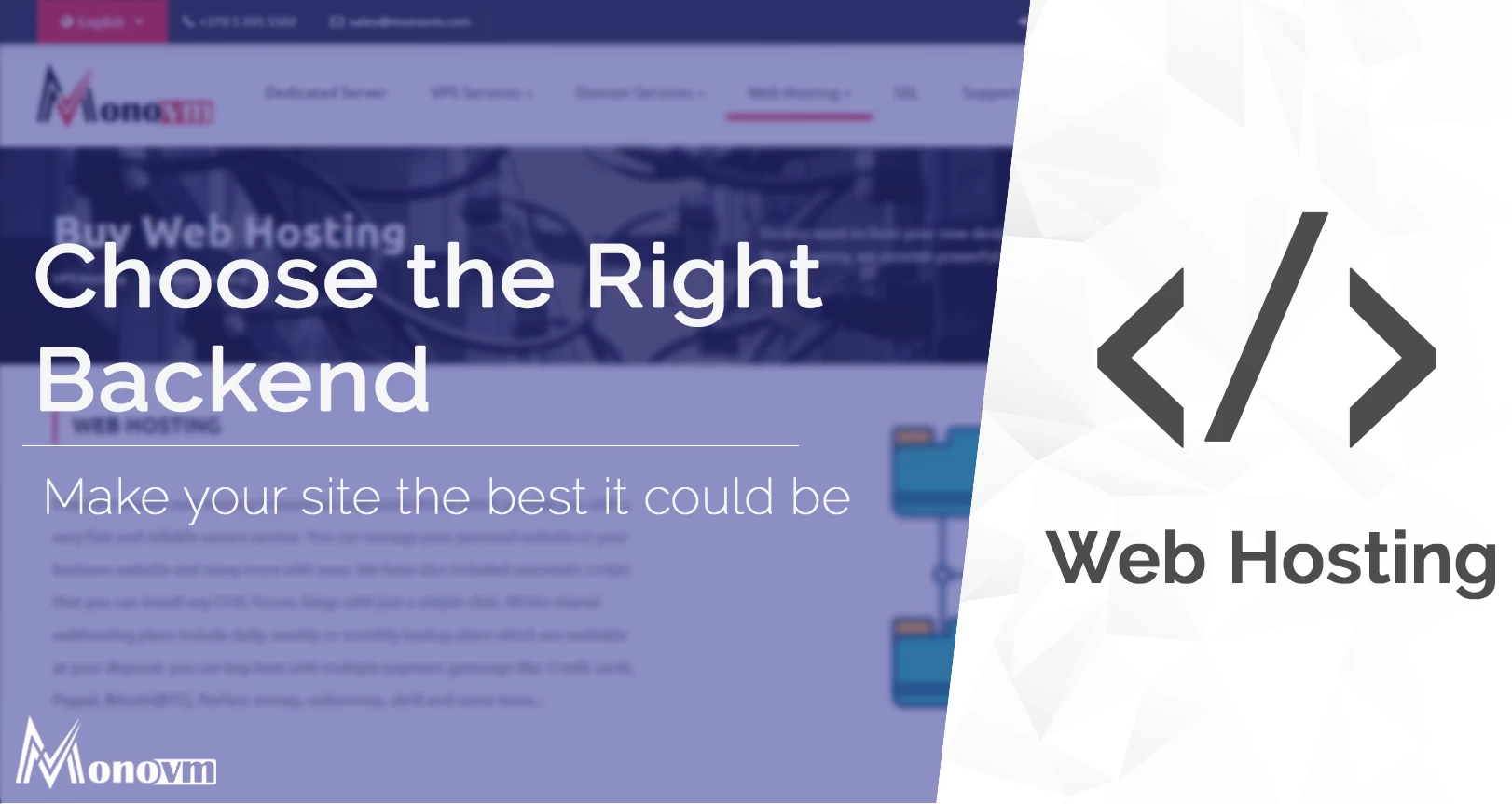List of content you will read in this article:
Many people have great ideas for new web apps, however, actually creating one is quite difficult and we are not even talking about writing the actual code for it.
Choosing the backend technology behind the app would be the first and foremost thing to do, as it is responsible for the site's performance.
It’s not a piece of cake as there are many stacks and technologies to choose from –
- Ruby on Rails
- Django
- Python
- Node.js, among many others.
How to choose the right backend technology stack for your web app?
What makes the choice even more difficult is that it’s not possible to say which language, framework, runtime environment, or stack is better than another – each has its own advantages and limitations.
In some projects, different technologies could be used interchangeably. In others, it would be impossible. That’s why it’s so important to make an informed choice instead of depending on the common myths or sticking to the easiest solution.
In this article, we’ll guide you through the most popular and widely-used backend web technologies in order to make this choice easier.
A technology stack is a set of programming languages, frameworks, libraries, databases, servers, and other elements, that are necessary to develop any kind of software.
These components are stack together to complement each other and build a fully functional application.
In web development, the stack includes:
The frontend, which is also called a client-side. It’s the part of the application that’s displayed on users’ screens and directly accessible. The fundamental frontend technology stack consists of components such as HTML, CSS, JavaScript, and its frameworks (for example, React and Angular).
The backend, which is also called a server-side, remains invisible and not accessible to users. It provides a ‘backbone' of the application. The most common components of the backend are programming languages, such as Ruby and Python; libraries and frameworks such as Ruby on Rails and Django; and a JavaScript runtime environment, such as Node.js.
A full-stack developer can do both frontend and backend development.
How to choose the technology stack?
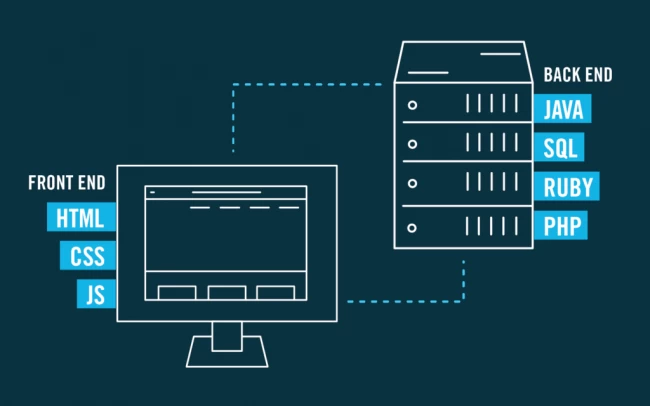
With such a wide choice of different elements of the stack, choosing the right ones is not the easiest decision to make. What makes it even harder is that the technology used for building an app affects its performance and, therefore, can be one of the factors that lead to the project’s success.
On the other hand, the type of application also affects the choice of technology. If the decision is wrong, it can affect the app’s failure. Of course, there are a lot of other reasons behind a project’s success or lack of it, but technology can play a significant role.
All of that can be particularly challenging for startups or small businesses with limited resources and small development teams that obviously can’t be proficient in every technology.
However, large companies can face the same problem, just on a different scale.
In fact, a team’s preferences can be a significant factor in making the choice. Even if you want to use a specific technology, you may change your mind after struggling to find a team that is ready to work with it.
This problem can be solved by cooperation with a software development company.
What else should be taken into consideration?
- Size and complexity of the project. Simple apps on tight deadlines, especially MVPs, require a different approach than huge products with myriads of functions. However, if you think you may need to upscale in the future, choose a flexible stack that allows you to grow.
- The type of product. Data-intensive apps, booking systems, social networking apps, streaming apps, CMS, IoT, FinTech apps, marketplaces, and simple MVPs will likely require different stacks.
- The cost. Remember that some tools are open-source and free for commercial use, which is only one point on the long list of the advantages that open-source gives both developers and stakeholders. Others are licensed and paid. What's more, developers’ rates vary depending on the technologies they’re proficient in. The stacks that are considered as a niche can be costly. In addition, keep in mind that the release is not the end of work on the app – you need to maintain, update, and possibly upscale it.
Now let’s move on to the most popular and widely used backend technologies.
We’ll guide you through the programming languages, frameworks, libraries, and other tools that are necessary to build a fully functional, robust application.
We’ve focused on the backend because the choice is wider and more difficult to make.
Programming languages
There are countless programming languages out there, however, Ruby, Python, and PHP are the most widely used backend programming languages.
Ruby

Although rumors about Ruby’s declining popularity are strong, it’s still a widely-used backend programming language. Ruby was created in the mid-1990s in Japan by Yukihiro Matsumoto, who wanted, “an elegant and powerful language” that will make developers happy by giving them a tool that is user-friendly, relatively easy to learn, and focused on productivity.
Ruby is an object-oriented, general-purpose, and high-level programming language that is a good choice for various web applications, including streaming apps or e-commerce, that need to be created on a tight deadline. That’s why it’s embraced by startups, not only when they need to create an MVP. Ruby has been chosen by Airbnb, GitHub, and Shopify among others.
Python

Python was created by Guido van Rossum and released in 1991. Similar to Ruby, it’s also an object-oriented, general-purpose, and high-level programming language, highly popular in web development.
What makes it different is that it’s more conservative and, usually, there is only one way to solve the issue with Python. It’s strict and clear, but also relatively easy to learn, which may be the reason why Python is very popular in scientific communities and widely taught in universities.
Python is universal and has been widely used and chosen by tech giants, such as NASA, Google, Netflix, Spotify, Instagram, Reddit, and more. Together, with its most popular framework, Django, it’s safe to say that Python rules the web.
PHP
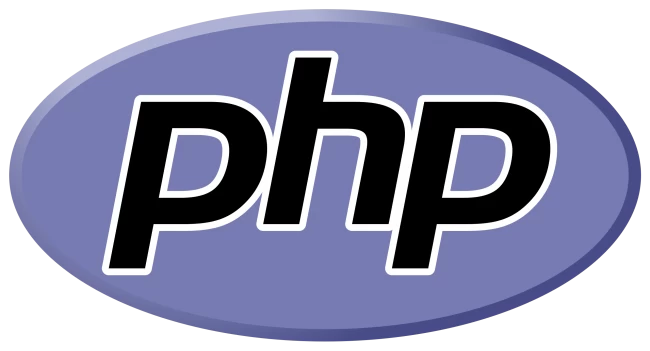
PHP (originally stood for Personal Home Page, then renamed to Hypertext Preprocessor) is an open-source server-side scripting language, developed in 1994 by Rasmus Lerdorf.
Soon after its creation, PHP grew massively popular and now powers 80 percent of all websites. One of the reasons behind this may be that the most popular content management systems, such as WordPress, Joomla, and Drupal, have been built in PHP.
It’s also widely used in e-commerce, powering WooCommerce, and Shopify. Another reason behind its popularity is the flexibility of PHP - it can be used to build both simple landing pages and giant services like Facebook.
According to StackOverflow's annual survey, 30 percent of professional developers choose it as their favorite programming language.
PHP is usually a good choice for web applications because it was designed for the web and, therefore, works smoothly with frontend technologies like HTML and CSS.
Frameworks, libraries, runtime environment
While Ruby, Python, and PHP are widely used backend programming languages, they must be paired with the right frameworks, libraries, and runtime environments to ensure success.
Ruby on Rails
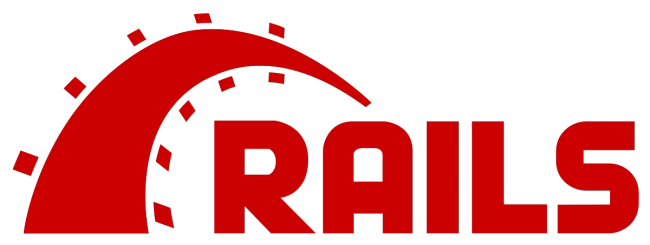
Ruby on Rails (RoR) is a popular web framework. One of the reasons behind Ruby’s popularity as a programming language. Its principle "convention over configuration" means that Rails comes with a set of conventions that makes development faster and more convenient.
There are also many ways to get the same result, which has both good and bad sites. Development is incredibly flexible and, therefore, easier, especially for less experienced programmers. However, then it’s more difficult to pass a project to a new team member.
In Ruby on Rails, a lot of work happens behind the scenes. Thanks to this, its code is elegant but may be more difficult to understand some decisions behind it.
Although Ruby on Rails faces decreasing popularity, just like Ruby, the reports of its death are greatly exaggerated.
Django

Django is one of the most popular open-source Python frameworks, released in 2005.
It was started at the Lawrence Journal-World newspaper. In the publishing industry, developers have to deal with a lot of data and tight deadlines. Django is often called the web framework for perfectionists with deadlines, which truly captures its nature.
Thanks to the DRY (Don’t Repeat Yourself) Principle, Django reuses the code that is already there and focuses on new parts, which makes a developer’s work incredibly fast.
Another advantage of Django is security. That, among others, is a reason why it has been widely chosen by FinTech apps, data science, booking engines, and e-commerce.
It is also praised for having batteries included, meaning that Django includes libraries and quality tools that are ready to use in various environments and projects.
No wonder that so many different products have been built with Django:
- Mozilla
- Spotify
- NASA
- National Geographic
- The Guardian
- Washington Post, just to name a few.
Node.js
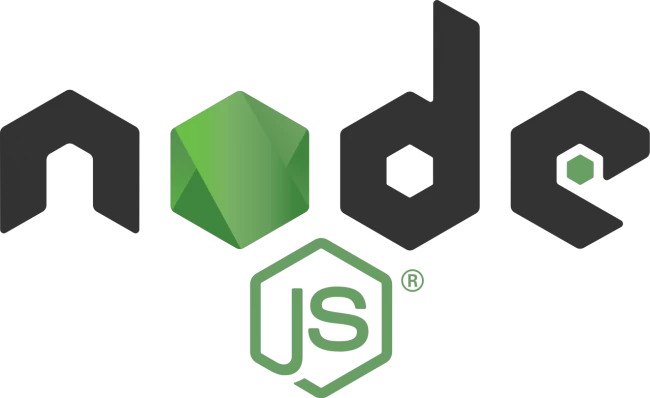
Node.js is the last backend technology presented in this article, but it may be the most interesting one.
First, Node.js is much younger than RoR and Django - recently this open-source and cross-platform JavaScript runtime environment celebrated its 10th birthday.
Ryan Dahl, its creator, wanted to build websites with real-time push capability. It worked. Thanks to the non-blocking I/O (Input/Output), multiple concurrent events can be served in a single thread.
In short, a Node.js app runs in a single process, without creating a new thread for every request, which makes app development very efficient.
Another advantage of Node.js is that it enables developing apps with a single programming language (JavaScript, the most commonly used programming language for a few years in a row), which also means it’s possible to build an app with the same code for both the server-side and client-side.
All of that makes Node.js fast, efficient, and flexible – even in data-intensive apps that need to run across different devices (no wonder Netflix and other streaming apps use Node.js).
Apart from Netflix, Node.js has been chosen by PayPal, Trello, Walmart, eBay, Linkedin, and more tech giants.
Choosing the Host
Once you have decided what technology you want to use for your site’s backend, you must decide where to host the said site.
What Is a Web Host?
Before we can choose a web host, it’s important you first understand the web hosting basics. Web hosting is essentially the physical side of the web. Every website you see online is made up of various images, media, apps, and other files that take up storage space. While we tend to think of the internet as something that exists outside of physical space, all those files have to be stored in a physical server somewhere.
In order to contain all the files that make up your website and serve them up to every person that visits it, a physical server must have a lot of power. For most website owners, owning and maintaining a server that powerful isn’t practical. That’s where website hosting companies come in.
Web hosts own a large number of servers that have the power required to provide consistent, reliable service for thousands of websites. When you sign up for a hosting plan, you rent some of the space on their servers. A good web host isn’t just selling that space, they’re also selling their expertise in keeping their technology running smoothly, efficiently, and securely—so that your website runs consistently without problems.
What to Look for in a Web Host?
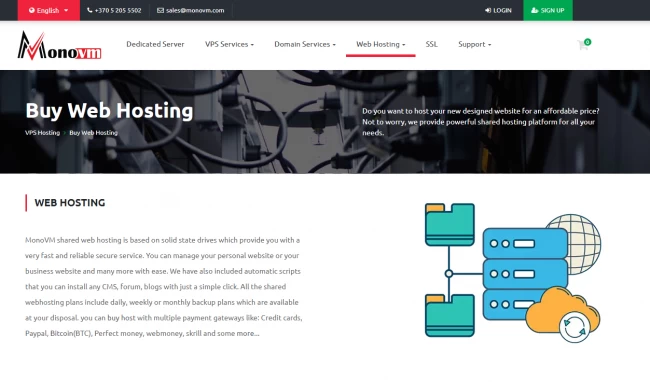
1. They have a strong reputation in the industry.
One of the best measures of a business in any industry is its overall reputation. When a business consistently serves customers well for years, word gets around. But how do you find out what a company’s reputation is?
Look for evidence from third-party sources. Have they earned any web hosting awards from reputable organizations or websites? Can you find reviews of them from tech publications? If so, what do they say?
2. They promise at least 99% uptime.
If your website is for a business, any time it’s not available loses you money. Even if this is a website you’re starting for fun, you risk providing a disappointing experience to visitors and losing followers if they can’t access your website each time they try to visit.
The main job a web hosting company has is to keep your website up and accessible online. Every web hosting company will have to do occasional maintenance that will temporarily take your website offline. And if servers aren’t properly maintained, they could overheat or break down, which means more time your website is inaccessible.
One of the big differentiating factors in the quality of web hosting providers is how well they manage the types of issues that can take your website offline. In industry parlance, the amount of time a web hosting company guarantees that your website will be available is called uptime, and reputable web hosting companies routinely promise at least 99% uptime. The best web hosting companies go even further, offering 99.9% uptime with a money-back guarantee.
3. They offer a variety of plans.
Today, you’re looking for a hosting package that delivers what you need right now. But you have big dreams for your new website. You hope that in the coming years, the number of people that find your website and become regular visitors will grow. Maybe you hope to continually create new content to add to your site as well.
In either case, you need room to grow. Most new websites get everything they need with an affordable shared web hosting plan, but as a website grows in size and popularity, at some point you’ll want to upgrade to cloud hosting, VPS hosting, or possibly even a dedicated hosting plan. When that time comes, you’ll have a much easier time making the transition if you can stick with the company you choose from day one. An upgrade is simpler than a full migration to a new company.
So before you choose the right hosting package for today, take some time to think about what you’ll need tomorrow and beyond and see if your provider has plans to match your future needs as well.
4. They provide 24/7 customer service.
When you’re up late at night working on those website fixes you’ve finally gotten around to, the last thing you want is to hit an issue you need customer support to resolve and realize you have to wait until the morning to get an answer.
5. The price is right.
Web hosting is a necessary cost if you want to have a website, but that doesn’t mean it has to be expensive. Simple shared web hosting plans start at less than $3 a month. When deciding on the right hosting plan for your site, keep in mind that web hosting isn’t a one-time cost. Web hosts use a subscription model for billing.
Make sure that the cost is something you’re comfortable with moving forward, and that it seems in line with what the plan is worth. While many new websites will manage just fine with the cheapest type of hosting plan, some will find it well worth spending more for additional features and higher bandwidth. Sometimes spending more is worth it, just make sure the value matches the price.
We at Monovm offer that and much more with our web hosting service. If you need top-of-the-line hosting services for affordable prices, Monovm is the way.
Conclusion
We hope that this detailed article informed you well about the different frameworks, programming languages, and runtime environments that are being used in the web hosting community. Now you can choose for yourself which ones are more suitable for your site and application. We also described what exactly you should look for in a web hosting service provider. If you have any questions or suggestions, please leave them in the comment section below.
